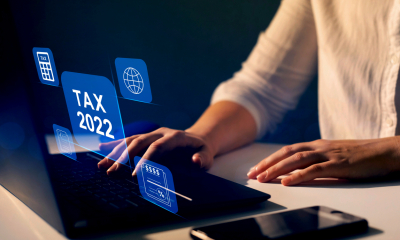
If you register for VAT with HM Revenue & Customs (HMRC), you must charge VAT on any goods and services you sell that are subject to VAT. VAT registration also allows you to reclaim some or all of the VAT you pay on purchases
VAT registration is compulsory for all types of business once you reach the VAT threshold or expect to exceed the VAT threshold. But even if your turnover is below the VAT threshold, there can be advantages to voluntary VAT registration.
The VAT registration threshold
The VAT threshold is £90,000.
VAT registration is compulsory if your UK turnover of taxable goods and services (any sales that are not exempt from VAT) over the previous 12 months goes over the VAT threshold. VAT registration is also compulsory if you expect your taxable turnover to exceed the VAT threshold in the next 30 days alone.
However, you can ask HMRC for exemption from VAT registration if you can show that your turnover has only temporarily risen above the VAT threshold, and that it will fall back below the VAT deregistration threshold £88,000. If you register, you can deregister later if you can show HMRC that your taxable turnover will fall below the threshold.
There are additional VAT registration requirements for importers in Northern Ireland and businesses making 'distance sales' into Northern Ireland. There are also special rules for businesses making distance sales of excise goods (such as tobacco and alcohol) into the UK.
VAT registration and accounting for VAT
It can take HMRC several weeks to complete VAT registration and issue you with a VAT registration number. But you must account for VAT from the date when VAT registration was required (eg the date you exceeded the VAT threshold).
That means you will need to keep proper VAT records. You also need to account for and pay VAT through VAT returns starting from the initial date of VAT registration. This includes paying HMRC the VAT due that you have charged on your sales (output VAT), and reclaiming the VAT you have paid on business supplies (input VAT).
However, you are not allowed to charge VAT or issue VAT invoices until you have received your VAT registration number. Instead, you need to increase your prices by an amount equivalent to the VAT you will be charging, and explain to your customers what is happening. Once you receive your VAT registration number, you can reissue proper VAT invoices which now do include VAT separately. In this way, neither you nor your customers will lose out.
Voluntary VAT registration and VAT planning
Voluntary VAT registration may be worth considering, even if your taxable turnover is below the VAT threshold.
For example, if you sell zero-rated goods but purchase standard-rated supplies, VAT registration will allow you to reclaim the VAT you are paying. Even if you sell standard-rated goods, VAT registration can be advantageous if your customers are other VAT-registered businesses that can reclaim the VAT you must charge after VAT registration.
It's worth noting that you may be able to reclaim VAT you have spent on supplies purchased before VAT registration. This can include goods bought up to four years previously and services up to six months ago. You must have proper VAT records and meet other requirements. You should take advice if you think you may be able to take advantage of this (eg if you want to reclaim VAT costs incurred while setting up a new business).
Finally, you should be aware that you cannot avoid VAT registration by artificially splitting your business into smaller businesses, each with a taxable turnover below the VAT threshold. Conversely, if you acquire a VAT-registered business and this takes your combined taxable turnover in the previous 12 months over the VAT threshold, VAT registration will be required. If you are involved in running several businesses or plan to acquire another business, you should take advice on the VAT implications.
VAT Registration Estimator | GOV.UK Tool
If you are thinking about registering for VAT, you can use this tool to find out what it might mean for your business.
The VAT Registrration Estimator tool can help you decide if VAT regsitration is right for your business and allows you to experiment with different inputs and outputs.
Visit the GOV.UK website to use the interactive tool.
Deregister for VAT
You must cancel your registration if you stop trading or join a VAT group or become ineligible for any other reason. You can, at any time, voluntarily cancel your registration if your turnover falls below the registration threshold. Visit the GOV.UK for information on when you can deregister for VAT.



